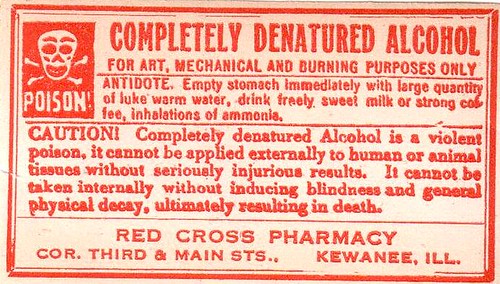Denatured alcohol, a versatile solvent, finds extensive use in the field of painting. Its composition and unique properties make it a valuable tool for various applications, from cleaning to thinning. Here’s a closer look at what denatured alcohol is and its specific uses in painting:

Denatured alcohol is a mixture of ethanol and additives like methanol or benzene, rendering it unfit for consumption. The additives give it toxic properties, which ensure its non-bioavailability for drinking purposes. As a chemical solvent, denatured alcohol is highly effective in various industrial, commercial, and household applications.
One of the primary uses of denatured alcohol in painting involves cleaning surfaces and preparing them for further coats or treatments. It's particularly effective for:
Its quick evaporation rate ensures surfaces dry rapidly, making it ideal for time-sensitive projects. For more detailed guidance on prepping surfaces, consider reading How To Paint Over Gloss Paint: A Step-by-Step Guide.
Denatured alcohol acts as a superior thinning agent compared to water when dealing with water-based varnishes and latex paints. Here are some benefits:
However, care must be taken not to thin more than 10% to maintain the integrity of the paint. To understand more about solvents, check out Acetone vs Mineral Spirits: Choosing the Right Solvent.
Denatured alcohol is highly effective at dissolving shellac flakes for wood finishing. It's also capable of removing old finishes, varnishes, and some adhesives without damaging the underlying paint, making it suitable for restoration projects.
Given its toxic nature, using denatured alcohol requires precautionary measures:
| Aspect | Denatured Alcohol | Mineral Spirits |
|---|---|---|
| Solubility | Water-Soluble | Not Water-Soluble |
| Drying Time | Dries Quickly (within minutes) | Takes 15-20 minutes to dry |
| Common Uses | Cleaning, Dissolving Shellac, Thinning Water-Based Paints | Thinning Oil-Based Paints, Cleaning Brushes |
For more examples of how denatured alcohol is used in academic settings, refer to the Towson University Course Fees: Academic Year 2024-2025 document.
While denatured alcohol excels in cleaning and thinning water-based materials, mineral spirits are better suited for oil-based applications. Always consider the specific requirements of your project to select the appropriate solvent.
In summary, the versatility and effectiveness of denatured alcohol make it an indispensable tool in painting. Whether you're preparing surfaces, thinning paints, or removing old finishes, denatured alcohol provides a reliable solution. Ensure you handle it with care to take full advantage of its properties while maintaining safety.
If you're looking to purchase denatured alcohol for your next project, consider the SUNNYSIDE CORPORATION Sunnyside 83416 1 Pint Denatured Alcohol Solvent for its reliability and effectiveness.
For more tips and techniques on handling various paints, read How to Remove Chalk Paint: Best Tips and Techniques Revealed.

Immerse yourself in architecture’s most boundary-pushing ideas—where innovative home improvements meet visionary urban developments. Discover new building techniques, materials, and creative concepts that are redefining how we shape our spaces on a global scale.